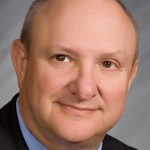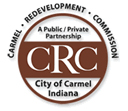By Adam Aasen
Again and again, Carmel city councilors keep asking the question during meetings: “Exactly, how much money does the Carmel Redevelopment Commission have?”

Carmel Clerk-Treasurer Diana Cordray, now treasurer of the CRC, has made it her mission to provide a clear answer.
She has hired Wabash Scientific, a consulting firm, to assist in her endeavors to find out exactly how taxpayer money is being spent.
Cordray said a report will be released this month with preliminary findings that are sure to spark some debate.
“The goal is to allow the public to understand what we do,” she said. “And I don’t think even the CRC members know all of this stuff we are finding.”
To start 2013, the CRC had $20 million in TIF revenue, but after paying $16 million in debt service and $3 million in over-commitments, there’s about $1 million currently left in the bank.
These numbers raise concerns for some like City Councilor Rick Sharp, but others like Mayor Jim Brainard say there’s no scandal to be uncovered here.
Either way, new CRC director Corrie Meyer, who started her job a few weeks ago, has a big task ahead of her. Not only must she continue the CRC’s mission, but she’s working to building relationships with a City Council that’s often sharply divided on the issue of CRC finances.
Some discoveries, more questions
Mike Lee, a financial consultant with the CRC, reports that as of the end of March, the CRC had $1.2 million available in the bank – $3 million if you count reserves.

Meyer said that money, “is covering the expenses that we have right now.”
“The CRC is fine,” Brainard said. “They have a careful budget.”
But Cordray questions how the annual TIF revenue is spent so quickly.
“The money comes it and it goes out, and that’s what it does,” she said. “It’s like if you have a paycheck and someone had a lien against you, so every time you got your paycheck there was nothing left … The redevelopment commission does not deal with finances. They just deal with spending money.”
Sharp said he won’t say whether the CRC is cash poor or not, but that he’s concerned that there’s never a clear answer given about the CRC’s financial picture. He said financial reports are always “in draft form” and are never completed and released, and he believes officials cherry-pick numbers in order to present a rosy budget.
One of the areas Cordray is focusing on is $2 million in “other revenue” that she said needs clarification. In some cases, she said this revenue is often tied to a financial commitment which can cancel out the funds or in some cases create an actual deficit.
For example, the CRC receives approximately $200,000 in annual revenue because of an arrangement regarding the Sophia Square parking garage, but it has to turn around and pay approximately $300,000 in annual maintenance costs for the building.
The Clerk-Treasurer’s office is working to compile a list of all the CRC’s financial commitments. That way, they don’t run into a situation such as the River Road construction controversy.
City leaders met with residents on Wednesday regarding the 2008 project that had been stalled due to a funding issue. When construction on the road improvements was set to begin, officials discovered that the TIF money that was raised for the project had already been spent on debt payments related to the Center for the Performing Arts and the Palladium. CRC officials said no harm was done since 2013 surplus funds were used to help pay for the costs. And Brainard said there is now a system in place to segregate these funds to avoid any future confusion.
Yet, Sharp points to issues such as River Road as an example of a lack of awareness of commitments.
“Who really knows what all the obligations are?” he asked. “Has anyone put pencil to paper and organized this? My answer would be probably not.”
Brainard said everything is always planned out and if there are any specific questions all anyone has to do is ask.
CRC and the 4CDC
One of the areas where Cordray is trying to find more information is about the relationship between the CRC and the Carmel City Center Community Development Corporation.

The 4CDC is a private nonprofit organization that supports business growth through complex financial mechanisms involving the CRC. It has nearly the same mission as the CRC and there is tons of overlap between members. Ron Carter is a former president of the CRC and is the current president of the 4CDC. As a city councilor, he is now part of the oversight of the CRC.
In 2013, the 4CDC used $34,450 of its money to pay wages owed to Les Olds, former director of the CRC. Brainard said it was easier to do it that way instead of going through a fight with the city council and said it’s a way the 4CDC can help the city do what’s right.
In a 2012 letter from Frost Brown Todd, an agency hired to assist with the refinancing of the CRC debt, concerns were raised about funds being transferred from the CRC to the 4CDC and back to the CRC, a way to get around the fact that TIF funds can’t be spent on operational expenses, Sharp said.
“Certainly, by appearances, it seems that the 4CDC exists to transfer money back to the CRC that by virtue of it coming from the 4CDC, it becomes unrestricted in its usage,” Sharp said.
Frost Todd Brown backed this up, saying in their report: “The mechanism exists for the CRC to grant money to a development corporation and then receive grants from that same organization in return. This did, in fact, happen,” noting a 2011 instance where $6 million was transferred to the 4CDC and then $5.5 million was transferred back to the CRC, saying that it “treated such funds as no longer being subject to the TIF limitations.”
The State Board of Accounts, in its official audit, had questions about how, “the CRC is granting TIF revenues to the 4CDC, a nongovernmental entity, for uses that cannot be verified.”
CRC officials said in meetings that they plan to send a response to answer the SBOA’s questions, but a response has not been sent yet.
After the CRC debt refinance, Sharp said it was written into ordinance that any entity that receives CRC grants would be subject to public records laws and therefore he said all documents should be made public. But 4CDC officials have a different interpretation of the ordinance.
Carter has denied requests from Cordray to provide documentation, saying it would take massive amounts of time and would create unnecessary costs.
The Current in Carmel filed two public requests with the 4CDC board requesting a complete list of subsidies the 4CDC paid in 2013 to businesses located in the Carmel Arts & Design District – either directly or through sublease agreements – and a list of properties the nonprofit owns, leases or manages. The board’s legal counsel, Kroger, Gardis & Regas, responded in writing, “The Board’s resolution last year addressed only the Open Door Law (IC 5-14-1.5), which applies only to meetings, not records. … Thus, before I can respond further to your requests, it appears that the Board needs to decide whether it will voluntarily subject itself to the Public Records Act, also.”
Brainard explained that the 4CDC is helpful because it can do things that the CRC can’t. For example, if the 4CDC owns a piece of property it can sell it outright without having to consider bids.
“Community development corporations are useful to help cut through the red tape,” he said. “A lot of times these processes get bogged down and delayed and the private sector can handle things much easier.”
Differing on debt
The difference of opinion on CRC finances is nothing new.
When the CRC needed help to refinance nearly $200 million in debt, that led many councilors to say the CRC needed to cut back on spending.
While Brainard agrees that a careful approach should be taken, he doesn’t believe in sitting on his hands. He is moving forward with new projects. When asked about massive undertakings, such as the Midtown Redevelopment Plan – a $100 million proposal – he simply smiles and says good news is expected soon.
To start on some of these new projects, the CRC has to take out loans, which Brainard said is such a common practice that it shouldn’t be controversial.
“Nobody has ever built a house without taking out a loan,” he said. “Debt is still a tool that can bring revenue to the city. The debt payments just have to be lower than the revenue that we bring in.”
Brainard said he believes nobody knew how bad the recession would be and that threw a wrench into some plans. He hoped to raise more charitable donations for the Palladium, such as naming rights that could have brought in more than $30 million in revenue.

Sharp said he admits the recession has been bad, but he said more could have been done.
“Sometimes their assumptions have been far more aggressive than the market reported,” Sharp said. “Many businesses and arms of government, while they didn’t know how deep the recession would go, restrained themselves and did not end up in the situation that Carmel Redevelopment Commission did. You simply have to look at the numbers. It was simply nonstop spending throughout the height of the recession that put them in a position where they were insolvent and had to be bailed out by the taxpayers.”
Sharp said he has no problem with borrowing for projects such as the Center for the Performing Arts, but is concerned when an initial cost projection of $80 million turns into $175 million.
Brainard said it’s unfair to criticize the value of the Palladium and its neighboring theaters because so much of their value is intangible for the city. Brainard is currently waiting on an economic impact study conducted by IUPUI that could tell people exactly how valuable the Center for the Performing Arts is to the city.
When there is extra money in the budget, there’s some debate about whether it should be spent paying down debt or starting new projects.
During the April 16 CRC board meeting, there was a report on an upcoming potential bond refinance that could lead to substantial savings in debt payments. There’s talk about whether to spread the savings out over the life of the debt or to frontload it to create new capital.
CRC board member Dave Bowers suggested frontloading because, “We’ve got projects where we could use the dollars now.”
New players, new game
A new state law, written by State Sen. Luke Kenley, whose district includes part of northeast Carmel, will ensure that redevelopment commissions will have to include legislators in their financial decisions. While the added oversight has led to this political infighting, Kenley said it’s necessary to have this debate when taxpayer money is being spent.

“The old way was binding the taxpayers to the community to debt that was never approved by elected officials,” Kenley said.
Councilor Carter, who dislikes the bill, said he thinks all of this debate about whether the CRC has enough money or whether it is being forthcoming with information is part of the new political game that Kenley has created.
“I think the CRC has been working well for years and I am not a fan of some of these changes,” Carter said. “While I have nothing but respect for everyone on the city council, I don’t think it’s right to play politics with these decisions.”
Some add that some of the CRC’s biggest criticisms might be coming from city council members who might be considering running for higher office. Brainard said he believes the CRC’s projects are overwhelmingly popular and that many of the attacks are vague and politically motivated.
“I think it is important to keep in the mind that the ‘Tea Party’ criticism regarding the CRC is really coming from a very small group of people,” he said.
One person who could be instrumental in closing the divide is the new CRC director. Meyer has spent her first few weeks sitting down with everybody, even the CRC’s staunchest critics. She hopes those that accuse the CRC of secrecy will sing a different tune after working with her.
“I understand the dynamic relationship that was in the past,” she said. “Hopefully, people see that I’m opening up a new door.”



